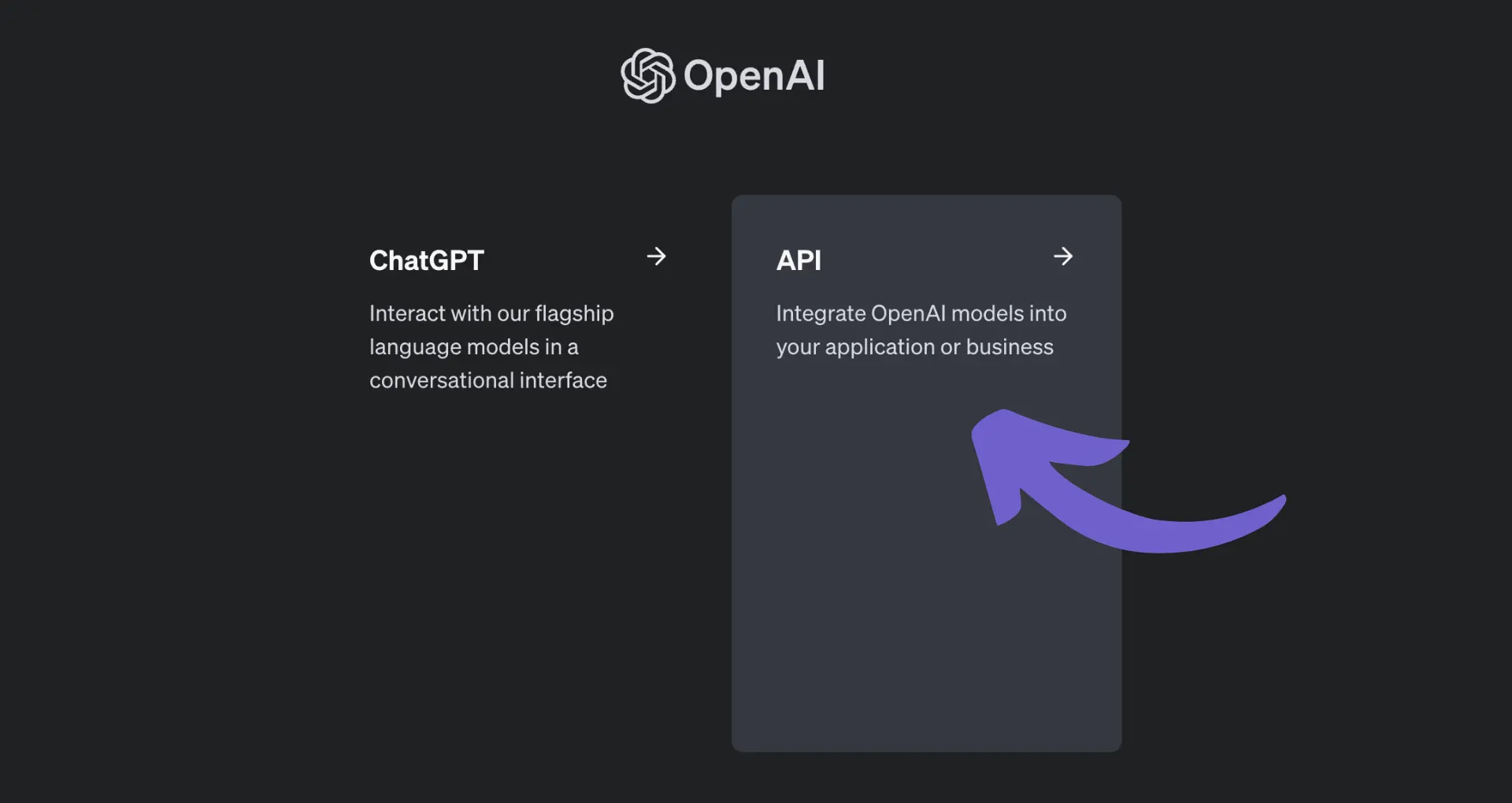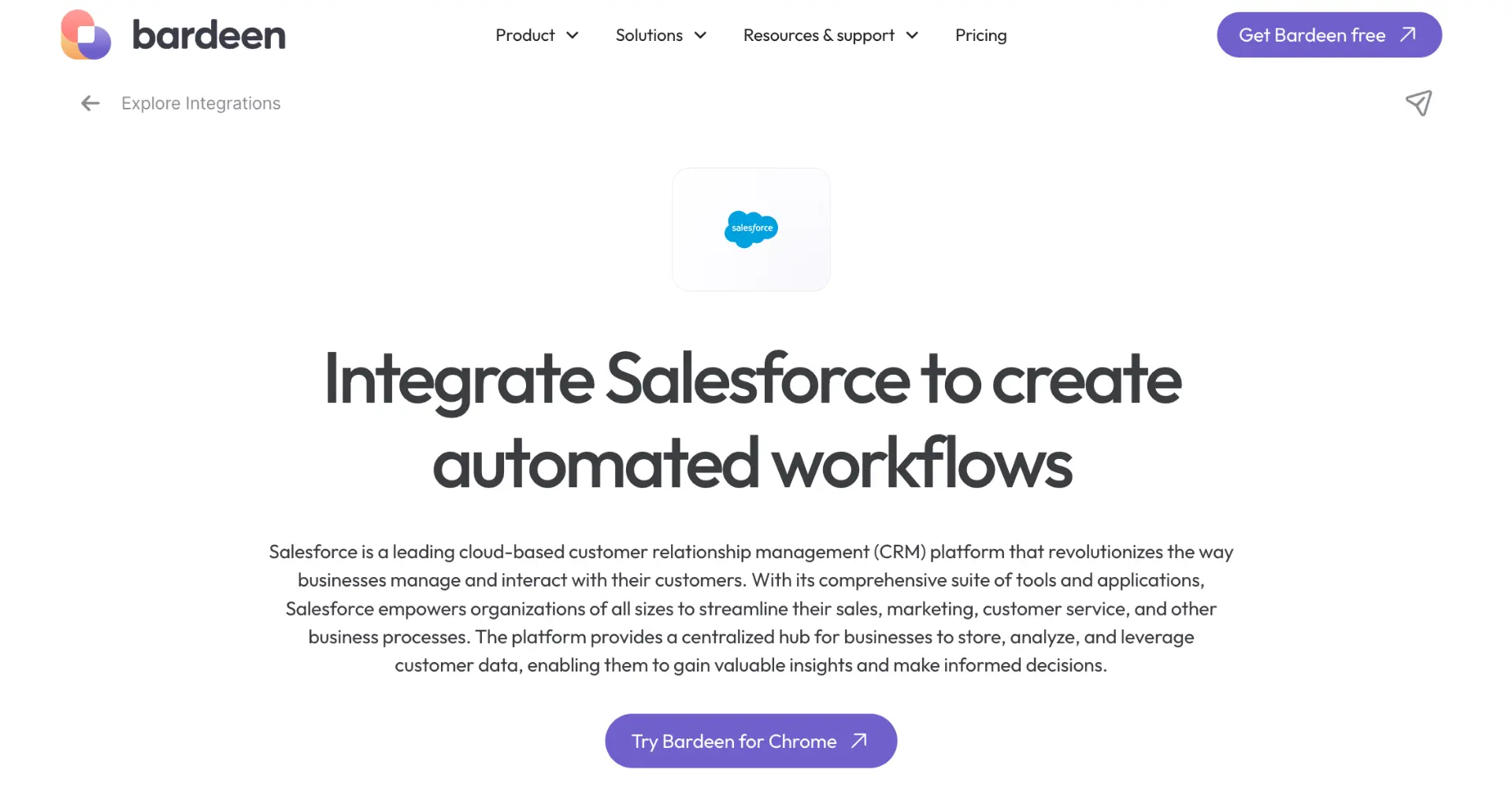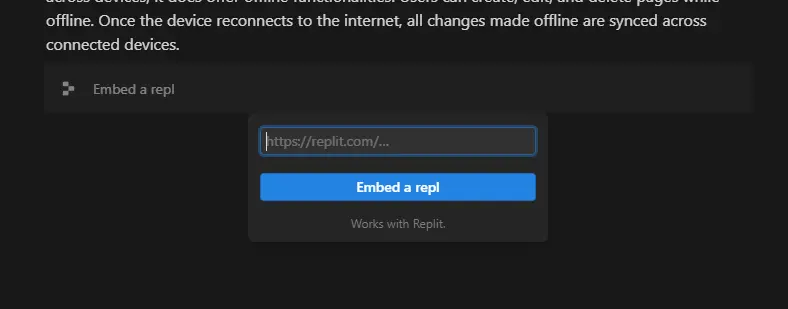





Integrate ChatGPT with Salesforce to automate intelligent responses.
By the way, we're Bardeen, we build a free AI Agent for doing repetitive tasks.
If you're integrating ChatGPT, you might love Bardeen's Salesforce automation. It saves time by automating tasks like creating opportunities and sending emails.
Integrating ChatGPT with Salesforce can revolutionize customer engagement by enabling automated, intelligent responses to customer queries. In this step-by-step guide, we'll walk you through the process of integrating ChatGPT with your Salesforce environment, from understanding the prerequisites to customizing and optimizing the integration for your specific needs. By the end of this guide, you'll have a powerful AI-driven solution that enhances your CRM capabilities and elevates your customer interactions.
Integrating ChatGPT with Salesforce opens up a world of possibilities for enhancing customer engagement and streamlining business processes. By leveraging the power of AI-driven conversational interactions, companies can provide instant, personalized support to customers, automate routine tasks, and gain valuable insights from customer data.
The key benefits of this integration include:
Throughout this guide, we'll explore the step-by-step process of integrating ChatGPT with Salesforce, from understanding the prerequisites and tools required to customizing and optimizing the integration for your specific business needs. By the end, you'll have a clear roadmap for harnessing the power of AI to transform your customer engagement strategy and drive business growth.
ChatGPT is an advanced AI language model developed by OpenAI that can understand and generate human-like text. It leverages deep learning techniques to comprehend the context and intent behind user inputs, allowing it to provide relevant and coherent responses.
Within the Salesforce environment, ChatGPT can be utilized to:
By integrating ChatGPT with Salesforce, businesses can harness the power of AI to streamline processes, improve customer engagement, and drive operational efficiency. The AI model's ability to understand and generate contextually relevant text enables seamless interaction between users and the Salesforce platform, unlocking new possibilities for automation and intelligent assistance.
Save time and automate your Salesforce tasks with Bardeen. Integrate OpenAI with Bardeen for efficient workflows.

Before diving into the integration process, it's crucial to ensure you have the necessary prerequisites and tools in place. Here's what you'll need:

By gathering these prerequisites and tools beforehand, you'll be well-prepared to embark on the Salesforce ChatGPT integration journey. Take the time to familiarize yourself with the Salesforce and OpenAI documentation, as well as the capabilities of your chosen development tools, to ensure a smooth and efficient integration process.
Now that you have the prerequisites and tools ready, it's time to dive into the step-by-step process of integrating ChatGPT with Salesforce. Follow these steps to ensure a smooth and successful integration:
By following these step-by-step instructions, you'll be well on your way to successfully integrating ChatGPT with Salesforce. Remember to thoroughly test the integration at each stage to ensure data accuracy, performance, and user experience.
Save time and automate your Salesforce tasks with Bardeen. Create opportunities with one click.
To maximize the potential of ChatGPT within Salesforce, it's crucial to customize the AI model to align with your business's unique requirements and industry-specific language. Here's how you can tailor ChatGPT to better serve your Salesforce environment:
Customizing ChatGPT for your Salesforce environment is an ongoing process that requires regular monitoring, fine-tuning, and optimization. By investing time and effort into tailoring the AI model to your specific needs, you can unlock the full potential of ChatGPT in enhancing customer engagement and streamlining your Salesforce operations.
Once you've successfully integrated ChatGPT with Salesforce, it's crucial to thoroughly test and optimize the integration to ensure seamless performance and user satisfaction. Here are some key steps to follow:
By following these testing and optimization best practices, you can ensure that your Salesforce ChatGPT integration delivers a robust, reliable, and user-friendly experience. Continuously monitor, iterate, and refine the integration to maintain optimal performance and adapt to evolving business needs and customer expectations.
Save time and automate your Salesforce tasks with Bardeen. Automate tasks with one click.

After thoroughly testing and optimizing your Salesforce ChatGPT integration, it's time to deploy the solution to your production environment. Here's a guide to ensure a smooth transition and ongoing management:
By following this deployment and ongoing management approach, you can ensure that your Salesforce ChatGPT integration remains reliable, secure, and aligned with your organization's evolving needs. Regular monitoring, maintenance, and continuous improvement will help you maximize the value of the integration and deliver exceptional experiences to your users.










SOC 2 Type II, GDPR and CASA Tier 2 and 3 certified — so you can automate with confidence at any scale.
Bardeen is an automation and workflow platform designed to help GTM teams eliminate manual tasks and streamline processes. It connects and integrates with your favorite tools, enabling you to automate repetitive workflows, manage data across systems, and enhance collaboration.
Bardeen acts as a bridge to enhance and automate workflows. It can reduce your reliance on tools focused on data entry and CRM updating, lead generation and outreach, reporting and analytics, and communication and follow-ups.
Bardeen is ideal for GTM teams across various roles including Sales (SDRs, AEs), Customer Success (CSMs), Revenue Operations, Sales Engineering, and Sales Leadership.
Bardeen integrates broadly with CRMs, communication platforms, lead generation tools, project and task management tools, and customer success tools. These integrations connect workflows and ensure data flows smoothly across systems.
Bardeen supports a wide variety of use cases across different teams, such as:
Sales: Automating lead discovery, enrichment and outreach sequences. Tracking account activity and nurturing target accounts.
Customer Success: Preparing for customer meetings, analyzing engagement metrics, and managing renewals.
Revenue Operations: Monitoring lead status, ensuring data accuracy, and generating detailed activity summaries.
Sales Leadership: Creating competitive analysis reports, monitoring pipeline health, and generating daily/weekly team performance summaries.